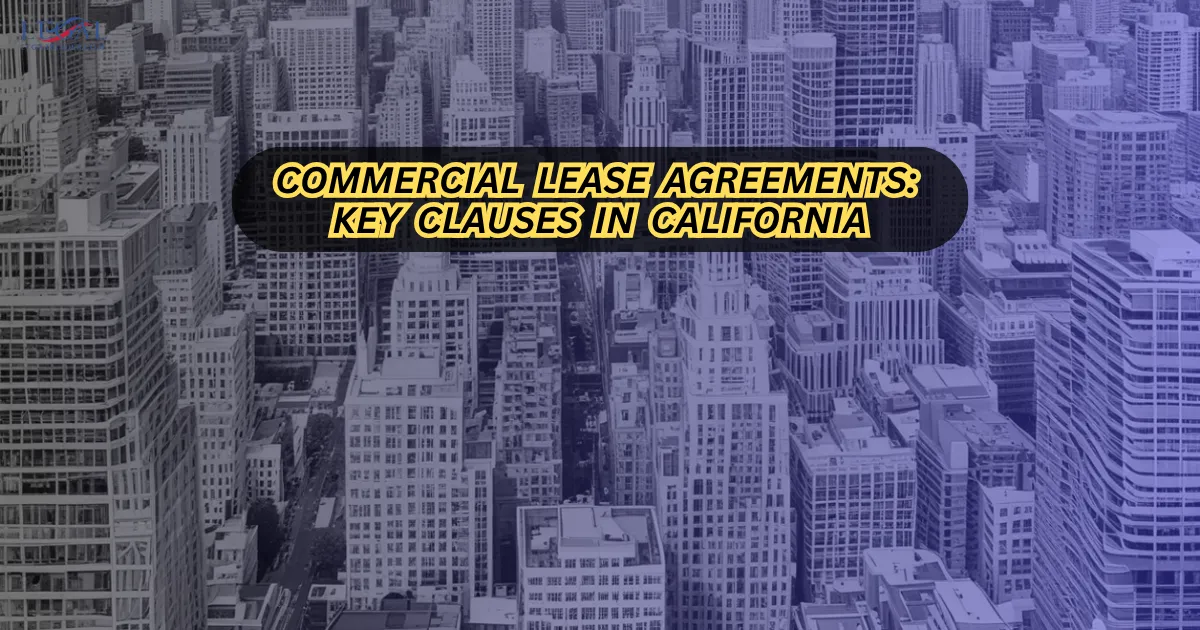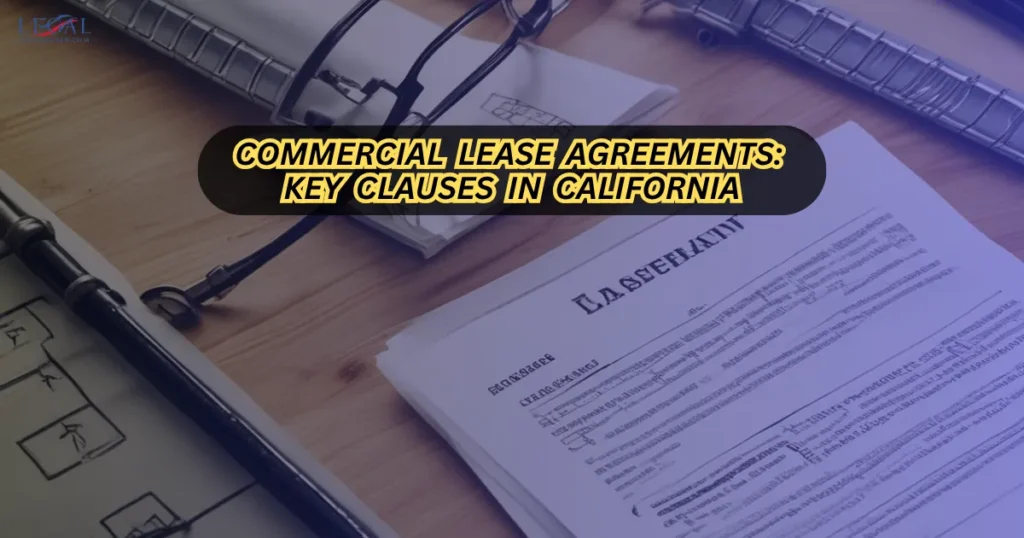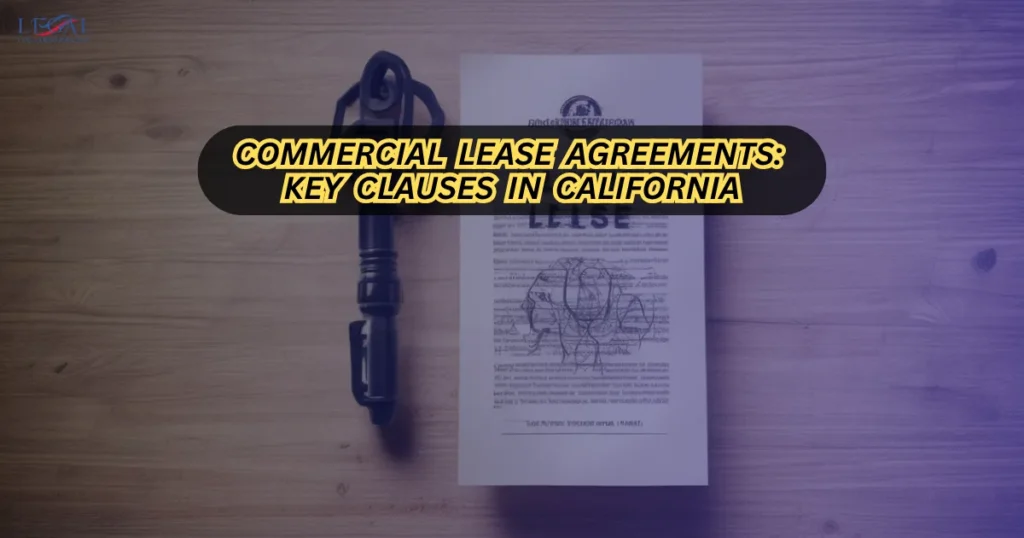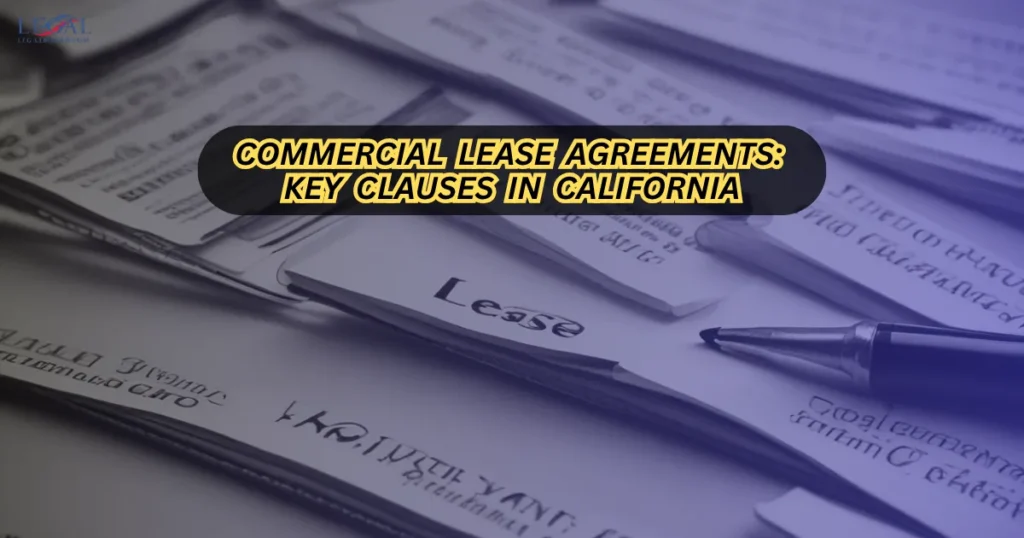Physical Address
304 North Cardinal St.
Dorchester Center, MA 02124
Physical Address
304 North Cardinal St.
Dorchester Center, MA 02124

Commercial Lease Agreements: Key Clauses in California can be the difference between a thriving business and a lease disaster. In California’s competitive commercial real estate market, your lease is not just a formality—it’s the blueprint for your business’s day-to-day stability and long-term success.

Picture this: You find the perfect storefront or office space. It’s in a high-traffic area, matches your brand, and feels right for your customers. You sign the lease, eager to start… but a few months later, a hidden clause forces you to pay unexpected maintenance costs or limits your operating hours. In business, clarity is power—and in California’s complex legal environment, knowing your lease clauses inside and out can protect your investments and your peace of mind.
This guide walks you step-by-step through the most important provisions in a California commercial lease. By the end, you’ll understand how to negotiate, manage risks, and secure a lease that supports business growth.
For more legal resources tailored to California businesses, visit our homepage.
A commercial lease is a legally binding contract between a landlord and a business tenant. In California, they are notably different from residential leases because:
Key reference sources for California commercial leasing:
Ensure the legal names of both landlord and tenant (including the business entity) are correct.
Include an accurate description of the leased area, square footage, and any shared spaces.
Specify start and end dates, renewal options, and how notice should be given.
Outline the amount, use conditions, and return requirements under California Civil Code.
Define what expenses are included—this is a common point of unexpected costs for tenants.
Specifies permitted business activities; too narrow a clause can limit future growth.
Sets rules for physical changes; clarify ownership of improvements at lease end.
Define the tenant’s ability to assign the lease or sublet space—crucial for business flexibility.
Detail default events and the landlord’s rights, including re-entry and damages.
Specify whether disputes will be resolved through litigation, mediation, or arbitration.

Your bargaining position depends on market conditions, location desirability, and available spaces.
A California real estate attorney can identify hidden risks and negotiate favorable terms.
Every clause should be explicit—never rely on verbal assurances.
Start negotiations months before you need the space to allow time for due diligence.
Any agreed change should be in writing within the lease or as a formal addendum.
Even with a long lease, review annually in case market conditions shift or laws change.

What is a commercial lease in California?A contract outlining the rental terms for a business property between a landlord and a commercial tenant.Are CAM charges negotiable?Yes, tenants should review and negotiate these to prevent unexpected expenses.Do commercial leases have security deposit limits in California?Yes, generally the equivalent of at least one month’s rent unless otherwise permitted by law and agreed upon.Can I terminate my commercial lease early?Only if early termination rights are included in the agreement or if negotiated with the landlord.
Commercial Lease Agreements: Key Clauses in California are more than legal fine print—they define the operational and financial landscape of your business. By understanding and negotiating these clauses, you can avoid hidden costs, gain operational flexibility, and protect your investment.
Start today: review your current or future lease with these clauses in mind, and consult professionals when needed. In the world of California commercial real estate, knowledge is not just power—it’s profit.
For more business and property compliance guides, visit our home page.